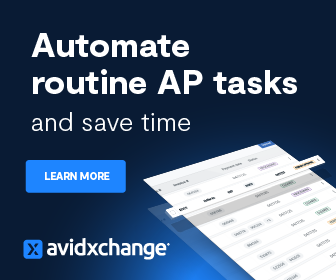Whether it’s reporting or reconciling, the day to day operations of the modern business requires a lot of legwork from those in accounting and corporate finance. Manual entry is often considered both unreliable and laborious, and a finger slip during data entry can result in hours wasted if the mistake is caught. If the mistake isn’t caught, the problems are only beginning.
Save Time and Reinvest: The Power of Transformation
However, the accounting and corporate finance space has seen a technological renaissance in the past decade, with formerly radical technologies now firmly in the mainstream. This has created new opportunities for decision makers, allowing them to focus on transformation and business evolution—but only if they know how to harness the power.
In fact, according to Accounting Today, the hours saved could be staggering: a firm with substantial tech assistance can gain around 9,000 hours a year to reinvest in training, technology, advisory and growth. For an already-stressed staff, this time savings can help to not only reduce burnout, but also to ensure that staff is ready to handle the evolving needs and challenges. Saved time means saved money, and after initial investments, this means money reinvested.
Taking Steps to Improve Your Technological Foothold
From short-term to long-term, this can go beyond savings—leading to a larger transformation and helping to exploit new opportunities. Exploring why departments need to evolve, what they need to transform, and who they need to incorporate, the Accounting Today article highlights a variety of goals and paths to success.
Know Why: Reduce Inefficiency and Leverage Opportunities
Before even looking at options, you need to know why this can help. The truth, according to Accounting Today, is that inefficiency is costing you money and opportunities.
Look at your staff. All of them are capable, but how many of them are able to take on something new? On the firm side, this may have held them back from offering additional services or focusing on advisory work. On the corporate side, this often results in a lack of decision support, management activities, or control activities—inefficiency among staff accountants trickles up and leaves more problems for each supervisor.
As summed up by Jody Padar, “If you know your people are busy, but you can’t tell if they’re efficient or even effective, there is a better way.”
Empower People: Encourage Specialization and Focus Teams
Staff serves to benefit the most from technology—despite fear that a decision could upend the department. Why? Because a transformed firm is going to be more nimble and collaborative—even if roles and management scope are more focused.
Something we noted in our article on redesigning FP&A, the team of tomorrow is going to be smaller and more diverse—rather than a general team, you’ll have more small teams working together toward the end goal.
Padar adds that “specialization boosts value — it saves time, allows new services that can be developed and sold, and lets people thrive according to their skill set and personality.”
Reinvent Processes: Standardize and Desilo
With initial time savings, you can reinvest this in bigger improvements. According to Padar, your goal in this stage is to create standard processes that every team, office and department will follow.
Sometimes, improvements in workflows manifest themselves when speaking with people, other times, you need to give people a healthy push. For example, one of those processes that’s still obtuse is the expense management process, in which a five-dollar coffee purchase can involve thirteen steps and likely cost ten times more than the cup itself.
Processes like this are still prevalent, and as we return to normal, it’s vital to identify what can be desiloed and improved.
Invest Wisely, Start Small
The final part of this is to avoid overexertion. Without technologically-enabled people, a big bang approach to change can fail to deliver, as significant and unguided improvement fails to provide value.
As we discussed in our recent Digital Transformation Blog, modularity is the key to transformation, as it’s often riskier to achieve everything at once. “Sequencing a digital transformation project with specific objectives and goals substantially improves success by allowing for precise alignment and focused effort. Teams learn from early wins, build confidence, and increase their probability of success for follow-on projects.”
Championing Digital Transformation: Your Guide to Success
For controllers, now is the perfect opportunity to evolve from being the historian of the company, to being the bridge between compliance and strategic leadership. After the craziness of 2020, controllers have an opportunity to lead the charge into the new normal, helping teams to work more efficiently while relying on technology to get them there.
If you’re looking to learn how you can lead the Digital Transformation Charge, we invite you to learn more from one of our on-demand webinars. The Controller’s Guide to Becoming a Digital Transformation Champion In 2021 was presented earlier this year and featured Cortney Herington, Director of Digital Transformation at HighRadius, and former Director of Finance and Operations at Coca-Cola Bottlers, who explored what it takes to be a digital transformation hero at your company.
From managing your workforce and setting expectations to promoting a culture of continuous improvement and deploying the right technology for the finance department, this webinar can help you to expand in 2021. Click here to watch on-demand.
Additional Resources
5 Ways to Reduce Spreadsheet Dependency




